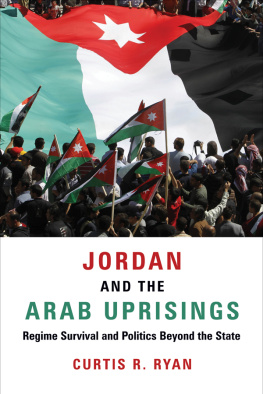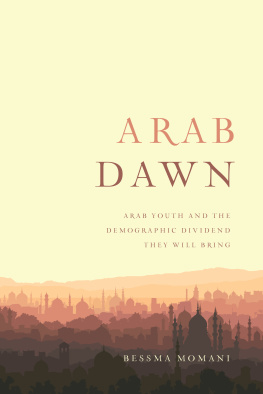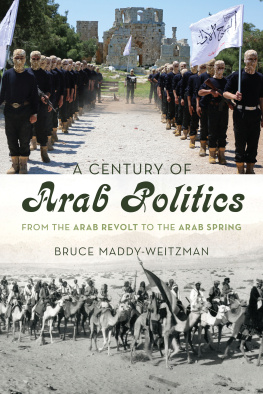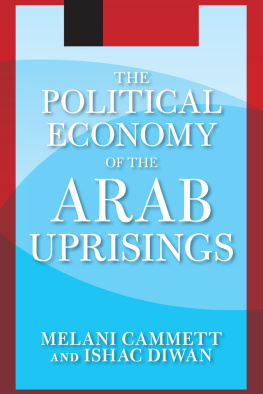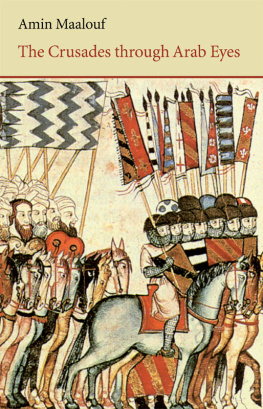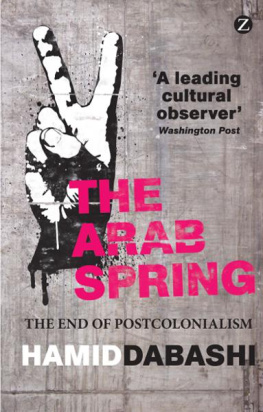THE WORLD THROUGH ARAB EYES
ALSO BY Shibley Telhami:
The Stakes
THE
WORLD
THROUGH
ARAB
EYES
ARAB PUBLIC OPINION AND THE RESHAPING OF THE MIDDLE EAST
Shibley Telhami
BASIC BOOKS
New York
Copyright 2013 by Shibley Telhami
Published by Basic Books,
A Member of the Perseus Books Group
All rights reserved. Printed in the United States of America. No part of this book may be reproduced in any manner whatsoever without written permission except in the case of brief quotations embodied in critical articles and reviews. For information, address Basic Books, 250 West 57th Street, New York, NY 10107.
Books published by Basic Books are available at special discounts for bulk purchases in the United States by corporations, institutions, and other organizations. For more information, please contact the Special Markets Department at the Perseus Books Group, 2300 Chestnut Street, Suite 200, Philadelphia, PA 19103, or call (800) 810-4145, ext. 5000, or e-mail special.markets@perseusbooks.com.
A CIP catalog record for this book is available from the Library of Congress.
ISBN: 978-0-465-02983-9 (hardcover)
ISBN: 978-0-465-03340-9 (e-book)
10 9 8 7 6 5 4 3 2 1
In memory of my parents, Terese Khalil Kabour Telhami and Zeki Shibley Telhami, who had been prevented by war from achieving their dreams, but who had the courage to send their firstborn teenaged son across a continent and an ocean to live his.
CONTENTS
Introduction:
INTRODUCTION
F OR THE PAST TWO DECADES I have sought to understand the attitudes of ordinary Arabs and to make a case that these attitudes fueled politics in the region in both the short and the long term. When I started this work, in 1990, most political scientists and foreign policy analysts discounted the importance of public opinion because the countries of the region were dominated by authoritarian rulers. Then the 2010 Arab uprisings arrived, seemingly from nowhere, and suddenly the attitudes of ordinary Arabs were inarguably the driving force across a large swath of the Middle East, not only shaping events as they happened but also laying the foundation for politics in the years ahead.
In a way I felt vindicated. Mostly, though, I wonderedand still dowhether and when this awakened giant will find its bearings. In my view, the key to understanding the region still lies in looking closely at the strongly held values and beliefs of people in the region and how they define themselves. Of course, these beliefs and notions of identity did not emerge from whole cloth in 2010; they evolved over time. And we now are better able to study their evolution, using the accumulated public opinion research of the past decade. That is the purpose of this book.
* * *
M Y JOURNEY INTO understanding Arab hearts and minds began as the cold war ended and just as Iraqs Saddam Hussein was emerging as the perceived winner of the devastating Iraq-Iran war that dominated the 1980s. To be exact, it started with a trip to the region that took me to Baghdad in early June 1990, just two months before Iraqs army invaded Kuwait. I had taken a leave from teaching political science at Ohio State University to serve, through a Council on Foreign Relations International Affairs Fellowship, as advisor to Congressman Lee Hamilton, then chair of the House Subcommittee on Europe and the Middle East. I would tour the region that spring and summer to research a report for Hamilton on the implications of developments in the region for the global balance of power.
The Arab governments and people I met and interviewed on that trip were clearly apprehensive about an impending era of American dominance, without the counterweight of the Soviet Union. To their minds, America now would be free to intensify its support for Israel, leaving Arabs still more vulnerable. Ever since the 1967 Arab-Israeli war, the United States had been the principal supplier of cutting-edge weapons to Israel, a substantial provider of economic aid, and Israels protector at the United Nations. Indeed, the majority of cases in which the United States employed its veto power at the UN Security Council during the cold war had related to Israel. The prevailing sentiment was that American support for Israel stood in the way of compelling Israel to withdraw from the Arab territories it occupied in 1967and that in the post-cold-war era, this would be even more the case.
No Arab leader, however, had expressed these concerns publicly more often and more forcefully, and in some ways more surprisingly, than Iraqs ruler, Saddam Hussein. Although it seems almost impossible to believe now, Saddam had been on Americas good side throughout his eight-year war with Iran, which he fought with significant U.S. military and intelligence support. By the start of the new decade, though, the bloom was off that rose. In a speech in Amman in February 1990, Saddam expressed what I discovered to be a common feeling among Arabs: Given the relative erosion of the role of the Soviet Union as the key champion of the Arabs in the context of the Arab-Zionist conflict and globally, and given that the influence of the Zionist lobby on U.S. policies is as powerful as ever, the Arabs must take into account that there is a real possibility that Israel might embark on new stupidities within the five-year span I have mentioned. This might take place as a result of direct or tacit U.S. encouragement.
By that summer, anger with American policy was more widespread. Driving immediate Arab sentiment were five factors: the perception that the Saddam Hussein sought to exploit this sentiment by hosting an Arab summit in Baghdad at the end of May, ostensibly to address the Palestinian question but also to celebrate his own emergence as the Arab leader most to be reckoned with by the West.
* * *
M Y TRIP THAT SPRING and summer would take me to Syria, Jordan, Egypt, Iraq, the Palestinian territories, and Israel. I met with many government officials. I also met with and interviewed journalists, academics, and businesspeopletalking to students and faculty at academic institutions, chatting in cafes, and visiting people in their homesand I made a particular effort to engage people informally, always in Arabic, and to find out whether Saddams concerns were widely shared. Even a flight from Baghdad to Cairo was helpful. Flying in economy on Egypt Air, I found myself in the middle of a plane full of Egyptian workers returning home from Iraq. During the Iraq-Iran war, Baghdad had relied heavily on Egyptian labor to replace Iraqis who were doing the fighting. The stories these workers told went beyond foreign policy. Although they expressed admiration for Saddam Hussein for standing up to Israel and the United States, they told stories of mixed treatment in Iraq and distinct cultural differences, even though they were Arabs like Iraqis.
My trip, starting in Syria, had been timed to coincide with a summit of most of the Arab heads of state, who came to Baghdad at the end of May to address the Palestinian question, which for most of the previous decade had been overshadowed by the bloody Iran-Iraq war. But in recent years it had again come to the fore, first due to the Palestinian uprising (what would come to be called the first intifada) in 1987 and then following the end of the Iran-Iraq war, which most around the world interpreted as an Iraqi victory. Saddam Hussein reigned supreme.
In Baghdad my views on Arab public opinion were both enriched and challenged. I arrived there shortly after the summit ended. U.S. ambassador April Glaspie, my host in Baghdad, invited me to accompany her to a dinner at the house of the Italian ambassador. She told me on the way that Palestine Liberation Organization chairman Yasser Arafat was still in Baghdad as the guest of Saddam Hussein. At the time, the United States had frozen its dialogue with the PLO, and neither she nor lower-level American officials could meet with him or his subordinates. Glaspie asked if I would be prepared to meet with him if the opportunity arose during my brief visit. Her reasoning was that I was not subject to the same restrictions that American officials faced and that Arafat might be happy to get a sense of how the American Congress viewed the Palestinian-Israeli conflict and that he, in turn, might want to share his views with Washington. She also reasoned that Arafat might feel more comfortable communicating in Arabic. On my side, I saw this as an extraordinary opportunity to meet and evaluate a central Palestinian figure I had only read and written about but never before met.
Next page

